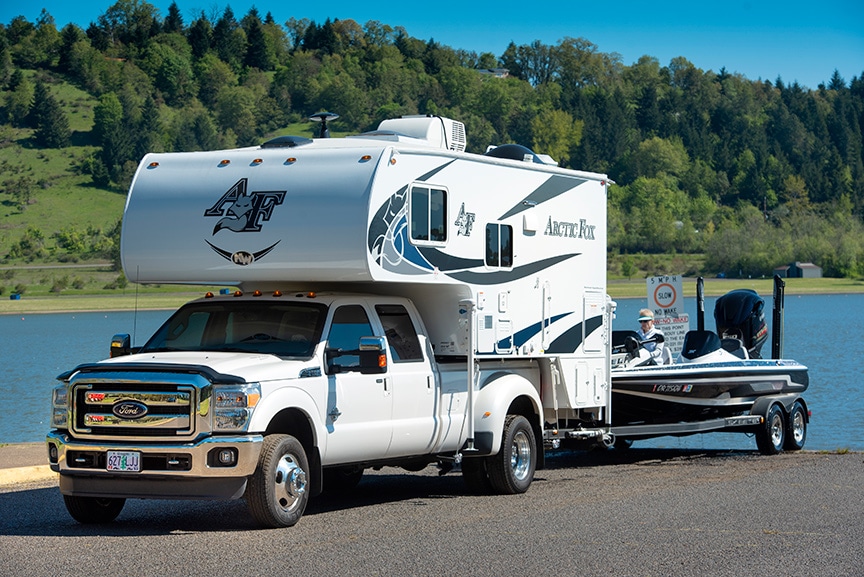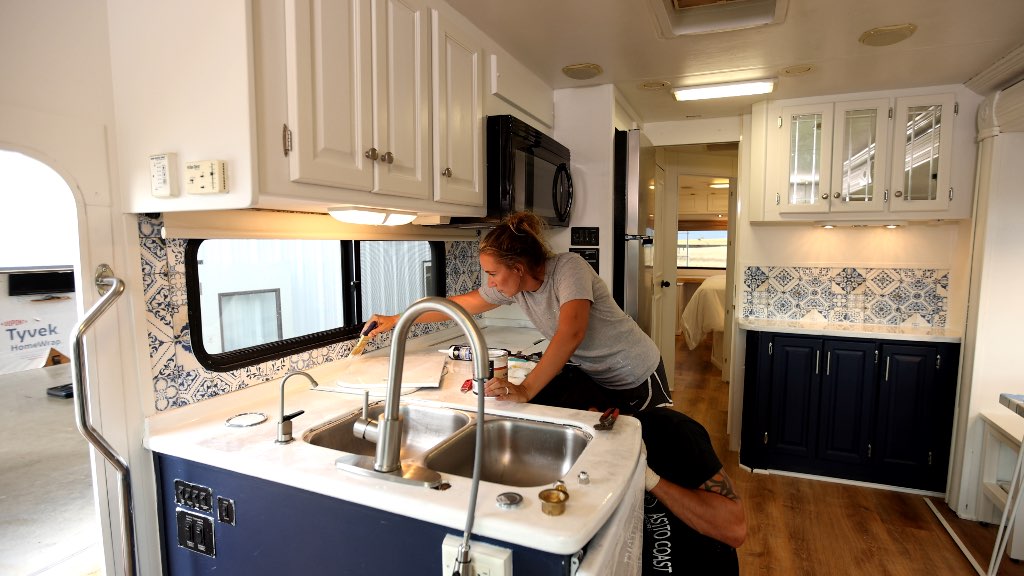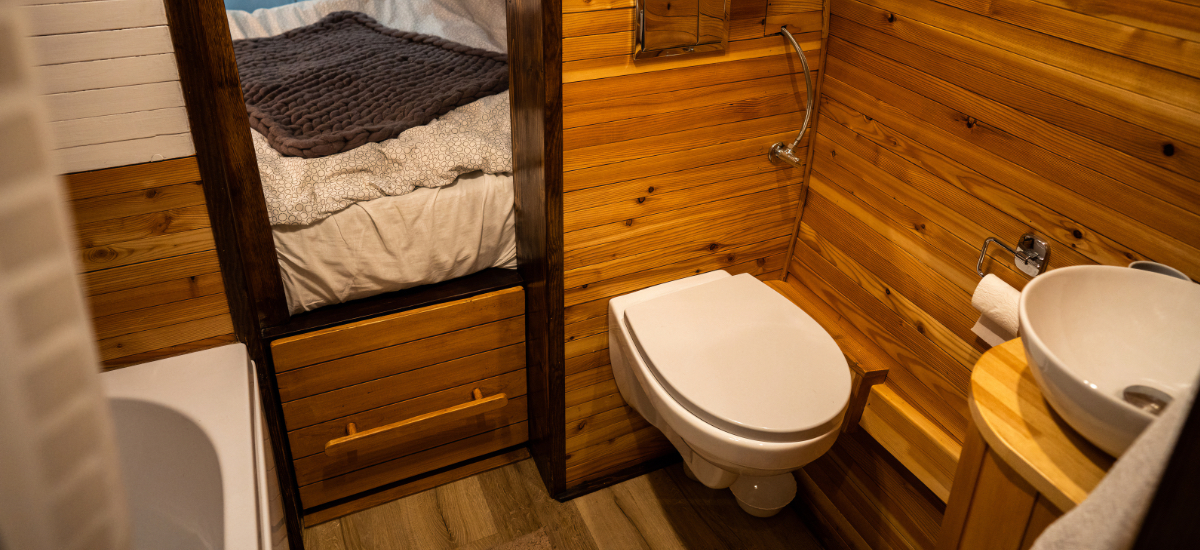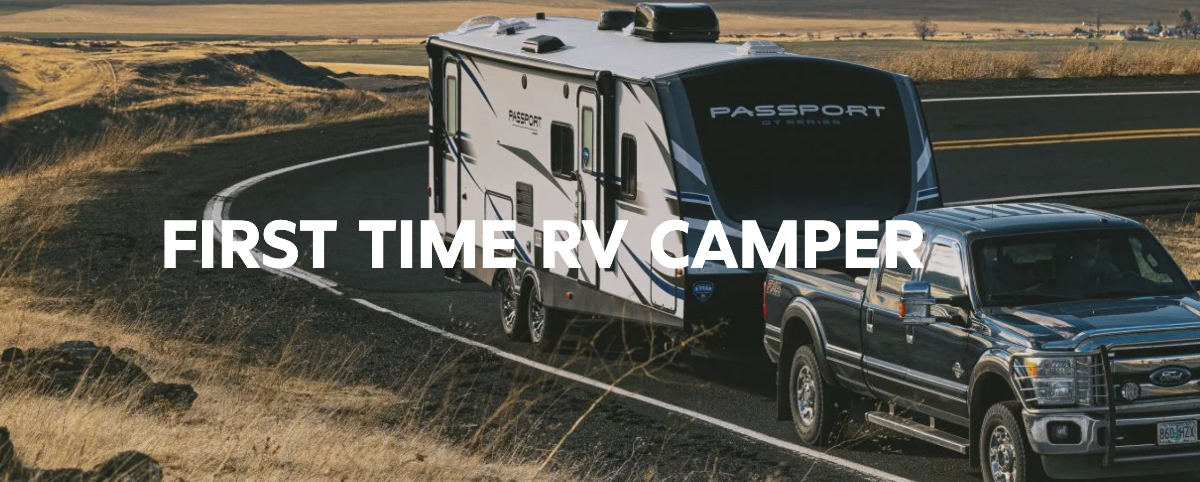How to Set Up a Truck Camper
Image Caption:
Shawn and Christy Smalley are typical of RVers who live an active outdoor lifestyle and are on the verge of becoming empty nesters. For years their family has enjoyed weekends, holidays and vacations RVing off the grid. When the kids were young, they towed a travel trailer, and years later they moved up to a 36-foot toy hauler loaded with whatever “toys” fit the mood, season and locale.
Now that the kids are grown and off on their own adventures, the couple is downsizing, trading in the big toy hauler for a Northwood Arctic Fox slide-in truck camper and a 21-foot bass boat. But the transition from a towable RV to a truck camper requires different vehicle considerations and suspension upgrades, because instead of pulling their RV behind them, they’ll be loading the truck bed of their Ford F-350 dually with it, and often towing their boat at the same time.
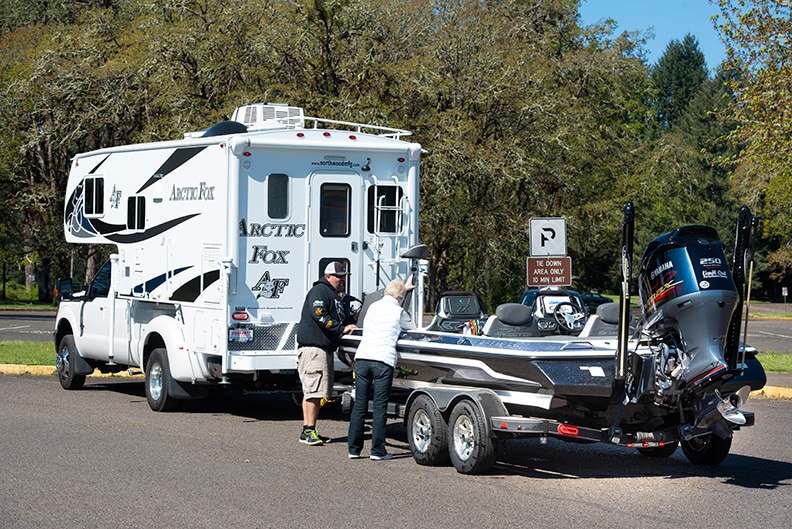
When a truck-and-camper combo is properly set up and matched, it’s a joy to drive and opens the door to making the most of every season, including towing a trailer with your boat or other toys to the next destination.
Assess Weight and Balance
A big part of safely pulling a heavy travel trailer or fifth-wheel is keeping the tow vehicle balanced, front and rear. A tall slide-in camper in the truck bed is a different story because it adds roll stability (i.e., top-heaviness) to the picture. It also requires a serious look at the truck’s maximum payload capacity. Add the Smalleys’ fishing boat, and that payload increases because of the trailer’s tongue weight, also known as hitch weight.
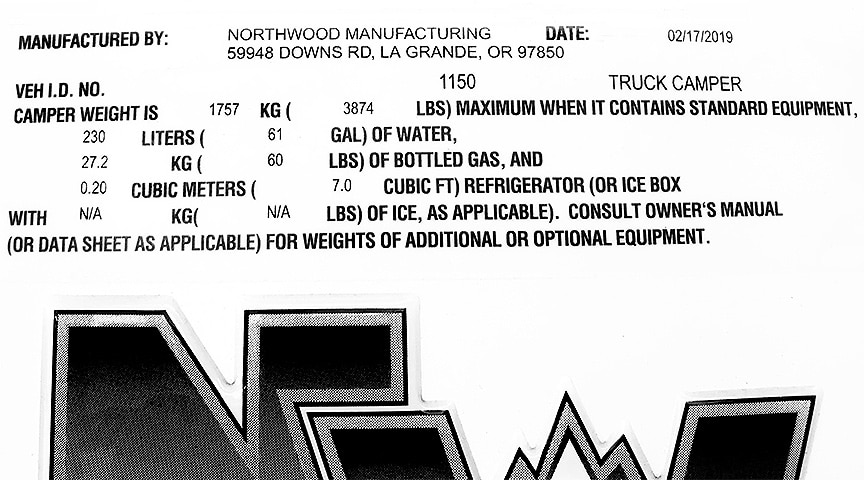
Truck campers usually come with a factory-applied tag showing weights and capacities. This one shows the weight of the camper with standard equipment and including full water and propane tanks. The loaded weight of a camper can be 400 to 500 pounds greater than the dry weight, which is important when matching a truck to camper.
That’s why matching truck to camper, and vise versa, is very important for the truck’s handling and overall stability. When loaded for a trip, a slide-in will weigh several hundred pounds more than its listed dry weight, as the camper will be prepped with water, food and gear, plus it may be equipped with options not listed on the original dry weight label.
It’s critical that the truck you have — or are looking to buy — has a payload capacity and gross vehicle weight rating (GVWR) sufficient to carry the added load, and a gross combined weight rating (GCWR) sufficient to include the pickup, its cargo and the weight of any trailer. It’s equally important that the weight of the camper doesn’t exceed the truck’s maximum towing capacity or the gross axle weight rating (GAWR) for its front and rear axles.
The truck’s maximum weight ratings are listed on the driver’s doorjamb tag as well as on the vehicle manufacturer’s website. Likewise, the truck camper’s weight can be found on the camper itself, usually to the right of the entry door. Study the numbers carefully. Overloading is easy to do and can lead to serious handling and safety issues.
Find The Right Truck for the Job
In general, the best pickup to carry a camper is one that has a payload capacity at least 1,000 pounds greater than the empty weight of the intended camper. That leaves room for the weight of added occupants, gear and water, plus the hitch weight of the trailer, if a boat or other toys are being towed. Half-ton pickups are great for the ultra-lightweight slide-ins, while three-quarter-ton pickups will usually handle medium-size cabovers in the 8-foot range.
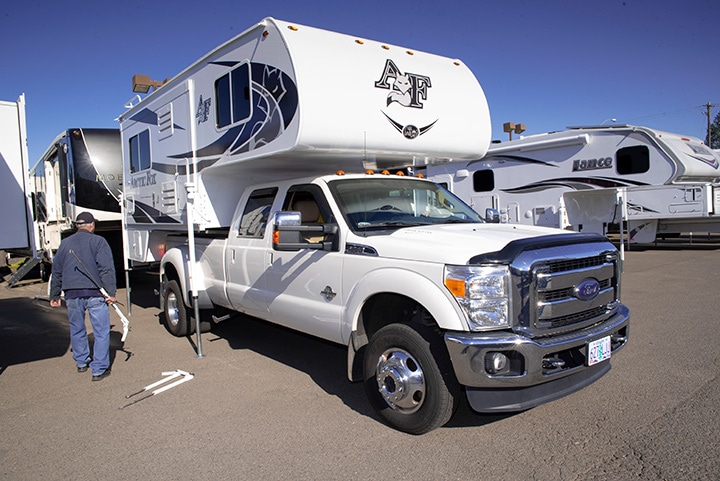
It’s crucial to match the pickup truck to the proper size slide-in camper. This 2015 F-350 Super Duty 4×4 dually was set up with a Northwood Arctic Fox 1150 that was 1,500 pounds lighter than its Ford-rated maximum payload capacity, which allowed a comfortable margin for towing a boat trailer.
For the largest campers, those exceeding 10 feet with one or more slideouts, a one-ton truck with dual rear wheels (DRW) is going to be the right choice. DRW pickups are the ultimate camper packer because their wide rear-wheel footprint provides the most stability, especially if towing a trailer in addition to hauling a camper.
Consider Suspension Options
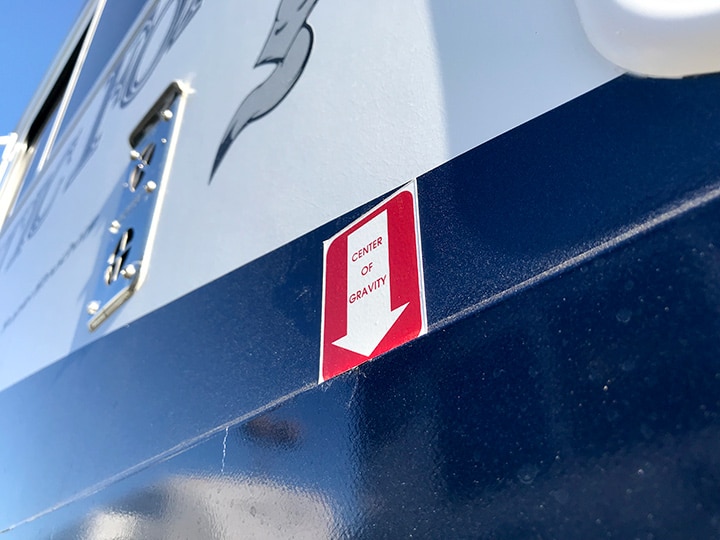
Manufacturers help in proper loading by indicating where the truck camper’s center of gravity (COG) is located. The label should end up directly over or slightly forward of the truck’s rear axle to keep the weight balanced on the vehicle.
Just because the load, GAWR and GCWR weights appear to match up doesn’t necessarily mean the truck-and-camper combo is going to be fun to drive. Raising the pickup’s vertical center of gravity (COG) with a cabover-type camper can create some uneasy handling characteristics, especially during cornering or encountering hard side winds. The suspension has to be “tuned” to handle the heavier load.
Unloaded, the general vertical COG of a pickup is roughly at floor height. Loading the bed with a tall cabover camper elevates that COG to a point that can be shoulder height or higher, depending on the camper. That higher COG translates to the pickup leaning as it goes through a turn, which can be quite disconcerting to the driver and passengers, and diminishes the vehicle’s handling and stability overall.
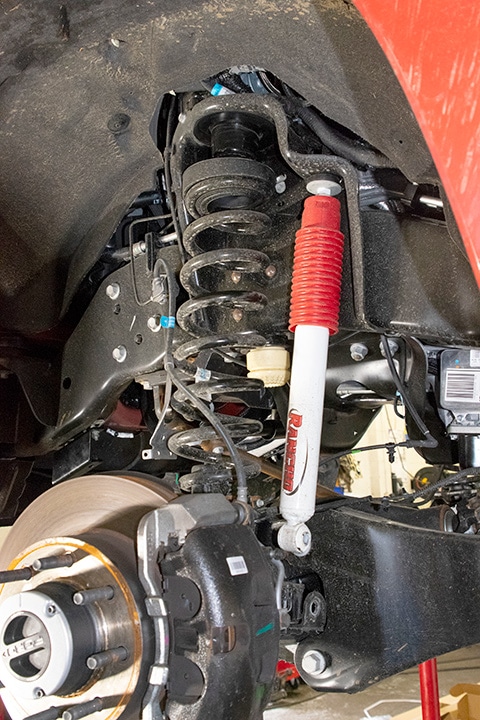
Heavy-duty front springs, a rear sway bar and better shocks are typical upgrades that come with half- and three-quarter-ton pickups ordered with the factory camper package.
Truck manufacturers are fully aware of how that change in vertical COG has an adverse effect on roll stability. To combat that, Ford offers an optional camper package for new pickups. Usually, that suspension package adds heavier front springs, rear springs and rear sway bars on half-tons, higher capacity front and rear springs on three-quarter-tons, and a rear sway bar on all single-rear-wheel (SRW) models. Camper-ready one-tons get heavier front springs, as they typically come equipped with front and rear sway bars and heavier-duty rear springs.
Trucks equipped with the Ford camper package also come with a slide-in camper certification plus a consumer information sheet that spells out important loading instructions and maximum capacities for that specific vehicle. These papers are usually found in the glovebox along with the owner’s manual. It has to be noted that Ford states that hauling a slide-in camper in a truck that doesn’t have the slide-in camper certification is not recommended, and doing so may void the vehicle’s warranty.
For those who own a pickup that didn’t come from the factory fitted with the camper package, such as the 2015 F-350 SuperCrew 4×4 longbed dually that the Smalleys drive, aftermarket parts are available that will equal, or better, the handling and stability found on camper-certified models.
Add Aftermarket Suspension Upgrades
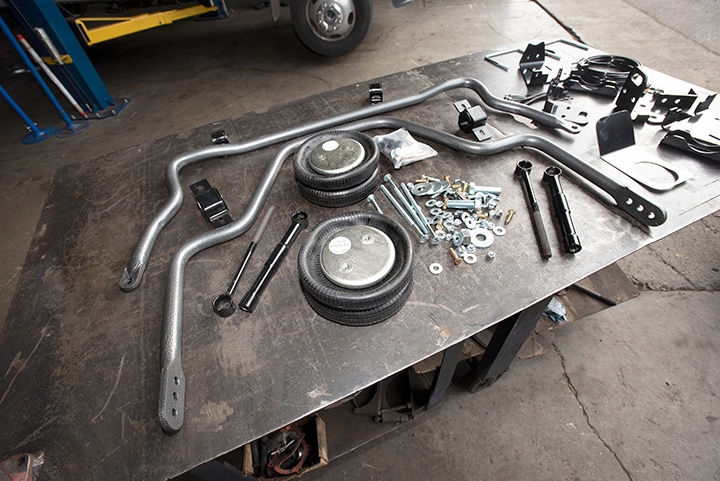
Optimal suspension-upgrade components are heavy-duty front and rear sway bars and rear air-helper springs. Hellwig Products’ 1 5/16-inch Big Wig sway bars and 2,800-pound-capacity air springs were put on the Smalleys’ 2015 F-350 to help improve the stability and control needed when equipped with a big slide-in camper and towing a trailer.
The first order of business in getting a pickup ready to haul a truck camper is to combat the top-heavy feeling when cornering or being buffeted by side-wind gusts, and prepare for traveling off pavement, if needed. Body roll or lean is caused when the weight of the load in the truck bed pushes down on the springs that are on the outside of the turn and the upward pull on the springs on the opposite side. The heavier and taller the camper, the greater the degree of body roll.
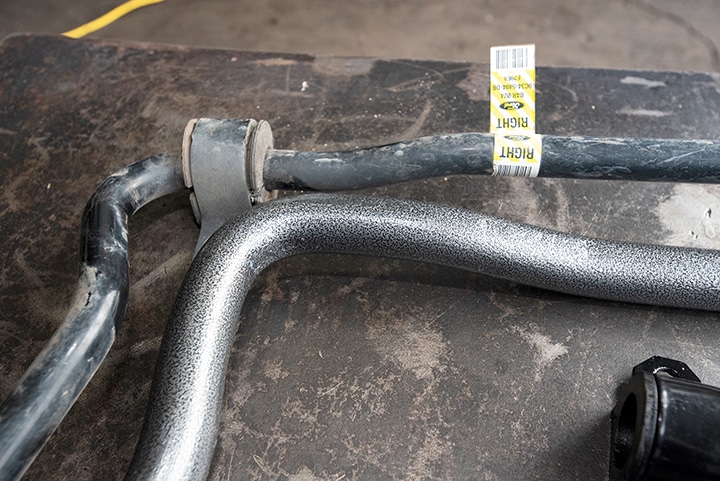
A thicker sway bar means less body roll. When upgrading the Ford dually’s suspension, we found the 1 5/16-inch Hellwig Big Wig heavy-duty sway bar is about a third more robust in thickness and of a higher quality of material than the factory front sway bar. The improvement in the truck’s handling was noticeably better with the larger bar.
A sway bar, more accurately known as an anti-roll bar, counteracts body roll. The shape and special steel used in making a sway bar significantly reduce body roll by resisting the downward push on the springs when cornering. The larger the diameter of the sway bar, the greater the control of body roll. Even if the pickup already has factory sway bars, such as DRW pickups, installing heavier duty ones, such as the Big Wig bars from Hellwig Products that were installed on the Smalleys’ F-350, will make a significant improvement in controlling body lean.
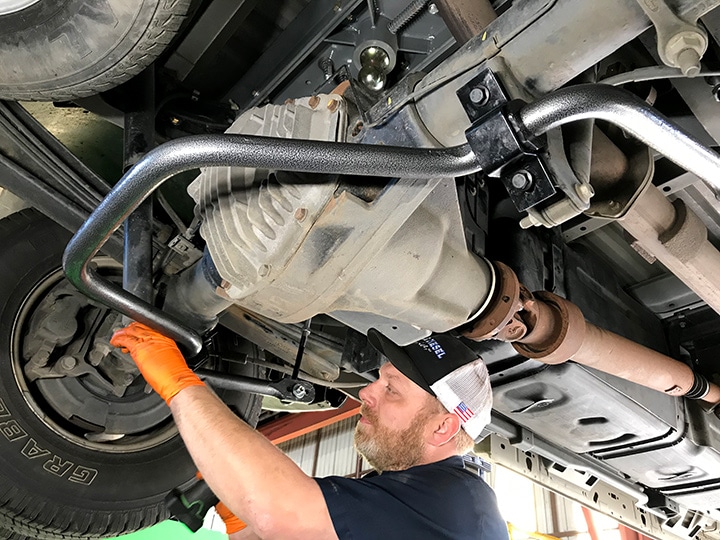
Aftermarket sway bars are easy to install and replace. Here, a technician at Mobile Diesel Service installs Hellwig Big Wig sway bars underneath the Smalleys’ F-350 in preparation for hauling a big cabover camper. The 4140 chrome-moly Hellwig rear sway bar is 1 5/16-inch thick, which provides considerably more body control than the much smaller diameter OEM one.
Springs need to be considered as well. Replacing the stock springs, front and rear, with ones rated for higher capacity, or installing overload or helper springs in the rear is recommended. The COG of a properly installed slide-in camper places the camper’s weight just forward of the pickup’s rear axle, thus adding load to both the front and rear suspensions.
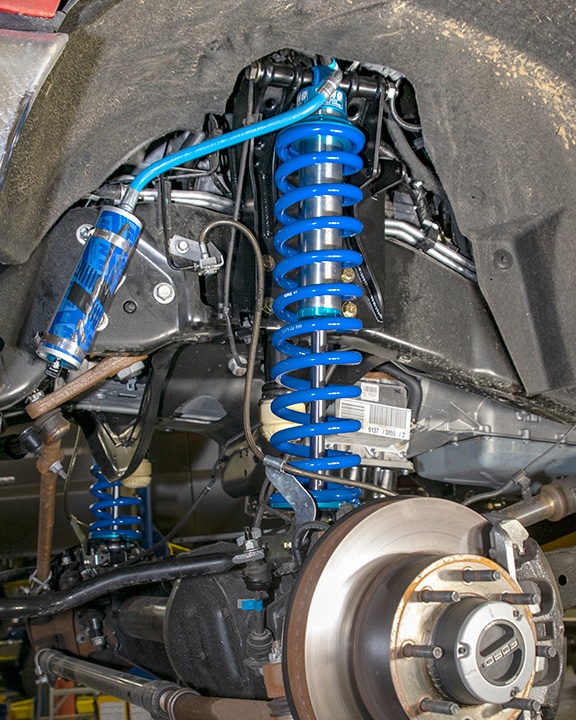
Pickups that didn’t come with the factory camper package will benefit greatly by having the front springs and shocks replaced with high-end aftermarket components. The owner of this Ford truck went all out with King coil-overs.
Another helpful modification in setting up a truck to haul a slide-in camper, particularly when towing a trailer carrying a boat, ATV or other toys, is the application of air helper springs. While air helper springs do not increase the vehicle’s rated capacities, they do provide an easy way to level the pickup. Air helper springs, such as those from Hellwig Products and Firestone Ride-Rite, help offset the weight placed on the rear springs by the trailer hitch weight, keeping the pickup level and improving handling during cornering. Support springs that are solid, without air inflation, are also available from SuperSprings. They work well but don’t have provisions for adjusting their spring pressure or support, as airbags do.
Then there are the shocks, which control the movement of the springs. Shocks are what control how the truck responds to cornering, braking, dips, and overall ride and handling comfort. Cheap, weak or worn-out shocks will allow the pickup to keep undulating long after the corner or dip in the road is fading in the rearview mirror. Investing in good-quality, high-pressure gas shocks, such as those offered by Fox, King, BDS, Bilstein and Koni, are a worthwhile upgrade for anyone setting up a truck for a slide-in camper.
Make Trailer Towing Modifications
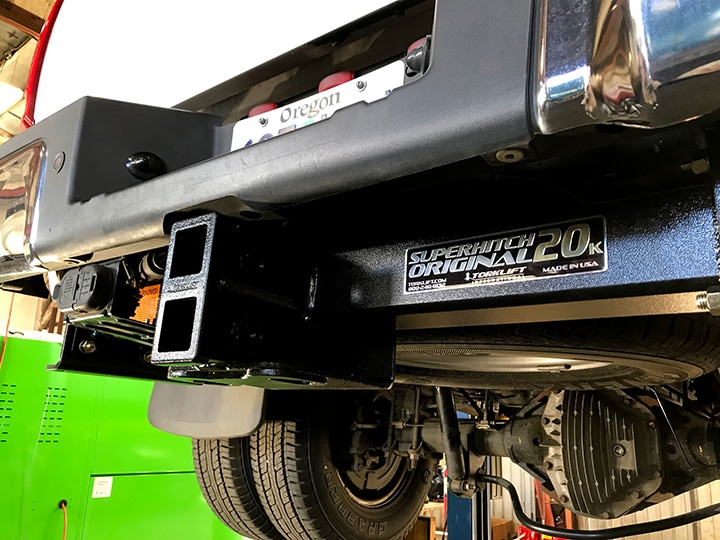
Rear camper tie-downs should mount to the receiver hitch, which is connected to the truck frame. This 20,000-pound-capacity Torklift SuperHitch not only provides a solid tie-down mounting location, it also features a double-receiver tube design to tow a trailer with an extended receiver.
Towing a trailer behind a slide-in camper places even more load on the truck’s rear suspension, as the trailer’s hitch weight presses down on the hitch. Many slide-ins necessitate lengthening the hitch receiver because of their bumper overhang. The longer that extension, the more leverage the trailer tongue applies to the rear of the pickup and the hitch extension itself.
Two modifications need to be made for towing with a slide-in on board: compensating for the added load on the rear springs and making sure the extended hitch receiver is stout enough to tow the trailer. What many who tow trailers behind pickups with campers don’t realize is that the longer the hitch extension, the greater the amplification of any movement between the hitch and the hitch ball.
To reduce such movement and better stabilize the trailer, it’s important that the extension has some sort of side-to-side stabilizing method. Installing a pair of adjustable cables or chains that run from the sides of the receiver extension back to the hitch will prevent lateral movement of the extension. It’s also prudent that the extension itself be sturdy enough to prevent it from bending down or buckling from the leverage forces exerted by the trailer hitch weight.
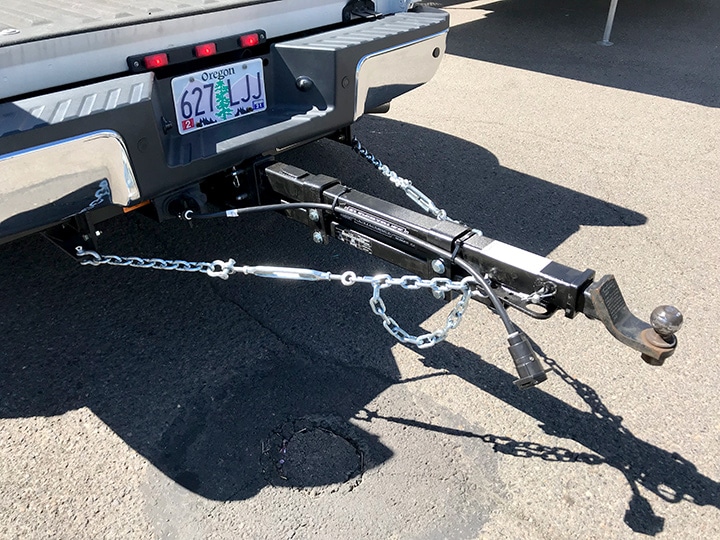
If towing a trailer is part of the slide-in camper program, a hitch extension will probably be needed. It’s important that the extension be well braced to prevent side-to-side movement and strong enough to support the stress of leverage from the trailer hitch weight. For this installation, the Torklift SuperTruss was used when loading the the truck camper on the F-350 dually so it could tow a 21-foot bass boat.
To reduce concerns about hitch capacity or strength, Torklift International, a company dedicated to slide-in camper mounting and trailer towing products, offers a dual-receiver SuperHitch (2.5-inch upper and 2-inch lower) and a SuperTruss extension, which were installed on the Smalleys’ F-350. Torklift reinforces its hitch-pin locations to prevent elongation wear, commonly known as “egging.”
Anchor Truck-Camper Tie-Downs
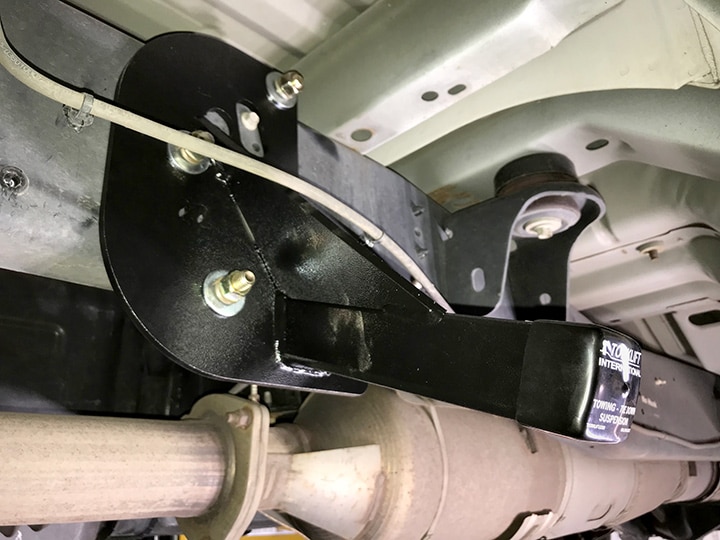
Well-anchored tie-downs are critical to camper loading and vehicle stability. The best tie-down systems have the front mounts bolted to the frame and the rears to the bumper or hitch. It’s not good to have tie-downs anchored to either the bed floor or the bed sides. This installation employed Torklift Talon mounts.
The last item on the list is securing the camper to the truck. A slide-in camper needs to be properly secured so it doesn’t move in the truck bed yet the bed can flex enough to keep from damaging the camper and its contents.
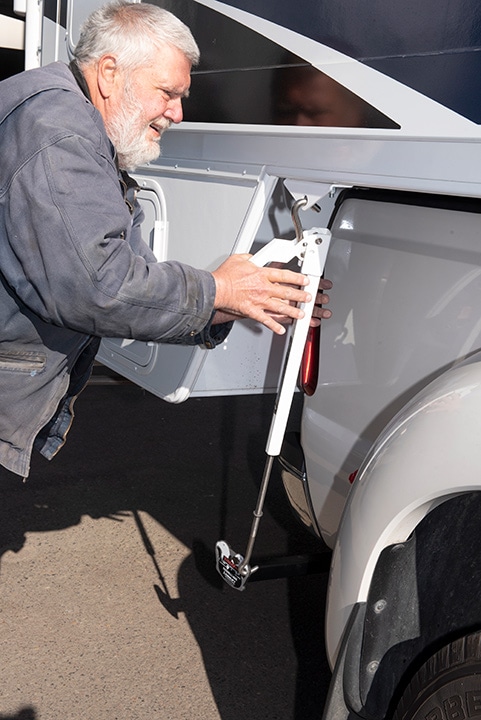
Rear tie-downs are just as important as the fronts. We utilized Torklift Talon tie-down anchors that attach to the ends of the hitch and matching FastGun quick-release turnbuckles to secure a camper to the bed of this F-350.
The first line of preventing the camper from sliding is to place a 1/2- to 5/8-inch rubber mat in the bed. Both plastic and spray-on bedliners are just slippery enough to allow the camper to slide. A thick rubber mat acts as both a vibration isolator and nonskid surface for the camper to sit atop. If insulation is a concern, a sheet of extruded polystyrene insulation board, the pink or blue variety, can be placed under the rubber mat to help keep the camper’s underside and basement, as appropriate, from being too cold.
Then the camper has to be anchored in place. The optimal mounting location for the front tie-downs is the pickup’s frame, while the rear tie-downs should attach to the bumper or the hitch. Some owners attach tie-downs to the bed, but there’s not enough meat in the thin metal for a really secure anchor point, and the bed is supported atop rubber or urethane bushings that flex. If the camper is anchored only to the bed, the bed will move even more because it has a heavy, high load in it.
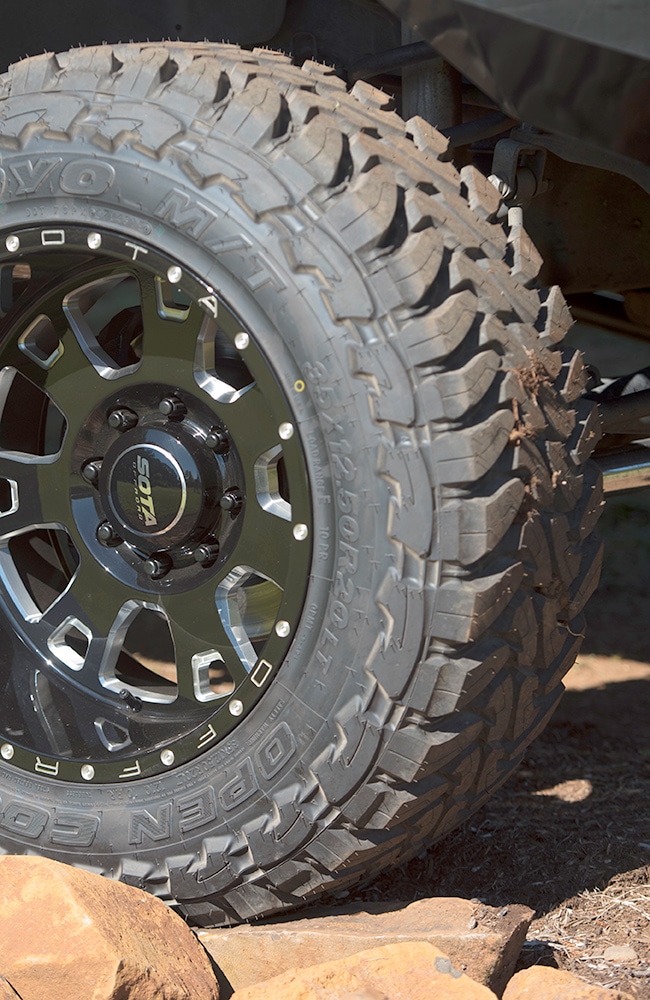
Another factor to consider when setting up a truck for camper-carrying duty is the load capacity of the tires. Light Truck (LT) tires are a must. So is having tires with a load capacity that’s greater than the weight of the truck and load in the bed.
There are a number of different tie-downs and methods from which to choose. Torklift FastGun spring-loaded turnbuckles are among our favorites, and are a brand recommended by many camper sales outlets such as Guaranty RV in Junction City, Oregon, where the Smalleys purchased their truck camper. These easy-to-use tie-downs attached to Torklift’s frame-mounted aluminum-and-stainless-steel Talon anchors. When the camper is removed from the truck bed, the anchors are almost invisible, and the extensions where the turnbuckles attach can be stored in the camper along with the turnbuckles.
With the above weight concerns addressed and upgrades handled, any truck packing a camper should be sufficiently equipped to forgo the stability issues encountered by a truck that is bone stock.
Gett Ready for Adventure
Oregon-based Mobile Diesel Service and Guaranty RV installed and applied the above suspension, towing and tie-down upgrades to the Smalleys’ F-350 dually in preparation for carrying the Northwood Arctic Fox 1150. The 11-foot, 3,500-pound slide-in camper is just the home-away-from-home the couple was looking for as a replacement for their toy hauler. Now they can rest easy on the road to their next destination with the camper on board and their fishing boat in tow.
